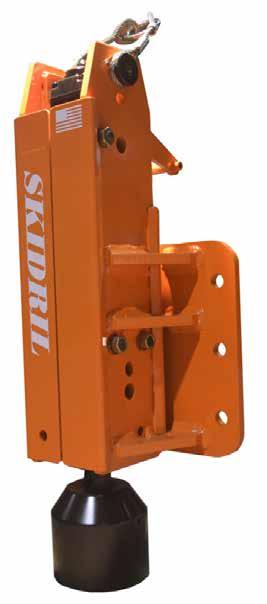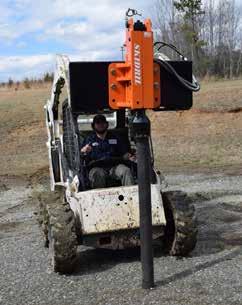
4 minute read
Management Corner - Small Business
Management Corner
Small Business Borrowing
While poor management is cited most frequently as the reason businesses fail, inadequate or poorly-timed financing is next in line. If you own your own business, it’s almost inevitable that one day – if you haven’t already – you’ll be facing a decision about borrowing money. The process of securing financing is often confusing and frustrating for many small business owners, who are not always financially savvy about business credit processes, and who have probably never had to deal with these issues before. Borrowing money for business is not a bad thing to do. In fact, used wisely, debt can be a valuable tool for growing and expanding your business. However, making the wrong choices about business financing, or poorly managing your business debt, can lead to serious problems in the future that can impact your business’s success. How you use and manage the money you borrow is just as important as whether or not you borrow money in the first place. The key to using borrowed funds wisely is to have a well-thought-out business plan to guide these decisions. One of the biggest mistakes commercial lenders see is people coming in not knowing exactly how much money they need. Lenders can do a much better job of helping someone get the money they need to start a business, or to meet a new need of an existing business, if they are given a business plan. The phrase “business plan” intimidates a lot of people, but it doesn’t necessarily mean you have to bring in 2-inch binder of data, charts, graphs and written reports. However, being able to show potential lenders you have a plan for your business, including projected expenses, income and profit, will not only prove your commitment to succeeding, but also help them structure your financing to meet your needs and budget. There are many different financing options business owners can consider, but the most common are line of credit and term loans. A line of credit is one of the most useful financing tools for small businesses. It allows you to borrow funds as needed to meet routine operating expenses, short term working capital needs or to cover temporary cash shortfalls. Once approved, you can borrow up to your predetermined credit limit at any time, usually simply by writing a check. The cautionary note with a line of credit is to use it judiciously. Interest is charged on any funds you access, and these should be repaid as quickly as possible. Extending the term on repayment will lead to additional interest expenses. Much like a personal loan an individual gets to buy a home or a car, a term loan is a loan of a specific amount of money, usually at a fixed interest rate and repayment terms. The term may be short or long-term, and is usually made for a specific purpose, such as to finance equipment, property, acquisitions or major business expansion. A commercial lender will work with the business owner to make sure the terms of this type of financing makes good business sense. If you are using the loan to purchase new equipment that is expected to last five years, for example, you shouldn’t finance that purchase over seven years. There are more restrictions on term loans, with personal or business assets often needed to secure the loan, depending on the amount needed. This is where having a good business plan really helps. The wide availability of credit cards makes them an increasingly common source of financing for small and start-up firms, but financial experts caution that these should be used only for short-term expenses, such as travel, entertainment, office supplies, and other miscellaneous expenses. Whether you're starting a business or experiencing growing pains, having sufficient, accessible capital is essential to business success, and borrowing money in one way or another is often the best way to make sure you have the money you need when you need it.
HP1000SS HP1000SS
ULTRA HEAVY DUTY ULTRA HEAVY DUTY HIGH POWER-TO-WEIGHT RATIO HIGH POWER-TO-WEIGHT RATIO ONE MAIN MOVING PART ONE MAIN MOVING PART LOW-FLOW REQUIREMENT LOW-FLOW REQUIREMENT
• • High-impact force High-impact force • • Uses less than 8 GPM Uses less than 8 GPM • • Patented accumulator reduces recoil, adds Patented accumulator reduces recoil, adds powerpower • • 6” driver tool standard 6” driver tool standard • • Near perfect center of gravity Near perfect center of gravity • • Highest hitting force per pound of tool Highest hitting force per pound of tool • • Self lubrication prevents damage Self lubrication prevents damage • • Closed circuit hydraulics creates no exhaust Closed circuit hydraulics creates no exhaust • • Drives wood and steel up to 6” diameter, Drives wood and steel up to 6” diameter, guard rail and more guard rail and more • • Drives stakes, rods and pins Drives stakes, rods and pins • • Runs off of skid steer loaders and tractors Runs off of skid steer loaders and tractors • • Can be slung or hard-mounted Can be slung or hard-mounted • • 1 year parts and labor warranty 1 year parts and labor warranty



Dimensions: 40 x 18 x 12 (main body without quick-mount plate) Dimensions: 40 x 18 x 12 (main body without quick-mount plate) Weight: 496 LB w/quick-mount plate & tool Weight: 496 LB w/quick-mount plate & tool Pressure: 1650 PSI Pressure: 1650 PSI
Impact Energy: 350 Ft-lb Impact Energy: 350 Ft-lb Flow: 5.5 - 7 GPM Flow: 5.5 - 7 GPM
SKIDRIL SKIDRIL
P.O. Box 8041P.O. Box 8041 Greensboro, NC 27419 Greensboro, NC 27419 Tel: 800-843-3745 Tel: 800-843-3745 Fax: 336-674-6690 Fax: 336-674-6690










